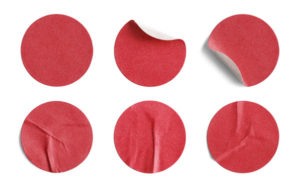- To begin establishing trust in a brand new client relationship, sell your personality, and the gallery’s value before you focus on selling an artwork. This is a good strategy when someone is browsing the gallery, and you get the “I’m just looking” response to your presence.
If a prospective art buyer feels you are not out to sell them, then they feel more secure in actually buying or at least giving you their contact information for future conversations. If you can make a customer feel important and their tastes understood, then you will create good rapport. Closing a sale is a natural progression.

- Enable a prospective buyer to lead the conversation. This is where superb listening skills are necessary for a sales associate. Begin to ask meaningful questions and then shut up and listen well. You will become empowered to direct the conversation towards a particular artist or work of art and move on to closed questions.
- If selling is uncomfortable for you, have multiple conversation starters or talking points ready. Being prepared this way makes you appear at ease in the situation and viewed as knowledgeable regardless of the prospect. No two buyers are alike. Your starters could be related to a specific show or event or the gallery itself.
- A strategy to reinforce your credibility is to encourage objections in the sales process. Doing this assures the buyer that they have done their due diligence and are making a thoughtful purchase. Objections also allow you to better understand the needs and hot buttons of your new client when it comes to investing in something as personal as fine art.
- Sell value. An artwork is a product, but the story behind the piece, it’s uniqueness and what it could say about someone who owns the work is often where the value is found for a collector. Throughout the sales process, also be demonstrating the value of the art, the artist, and the gallery. When a buyer can connect to the additional value, it is much easier to close the sale.
- Be patient. Embrace the idea that each sale most often requires multiple interactions. If you put all your energy into building a relationship, they will begin to feel a sense of loyalty and want to buy from someone who cared, and established trust.
What advice would you share with other gallery professionals? More importantly, how has this advice made a difference in your role of selling fine art? Do you feel more comfortable with closing a gallery sale?
You may also enjoy these related articles:
Tips for Selling More Gallery Art and Enjoying the Process
Essential Training Skills for Selling Fine-Art


Great advice. Many sales take place after a time. Keep the connection by sending tearsheets, newsletters and other interesting advice and info. It’s best ti close while the window is open and the buyer is present.
Would love to get a refresh on how others close sale.